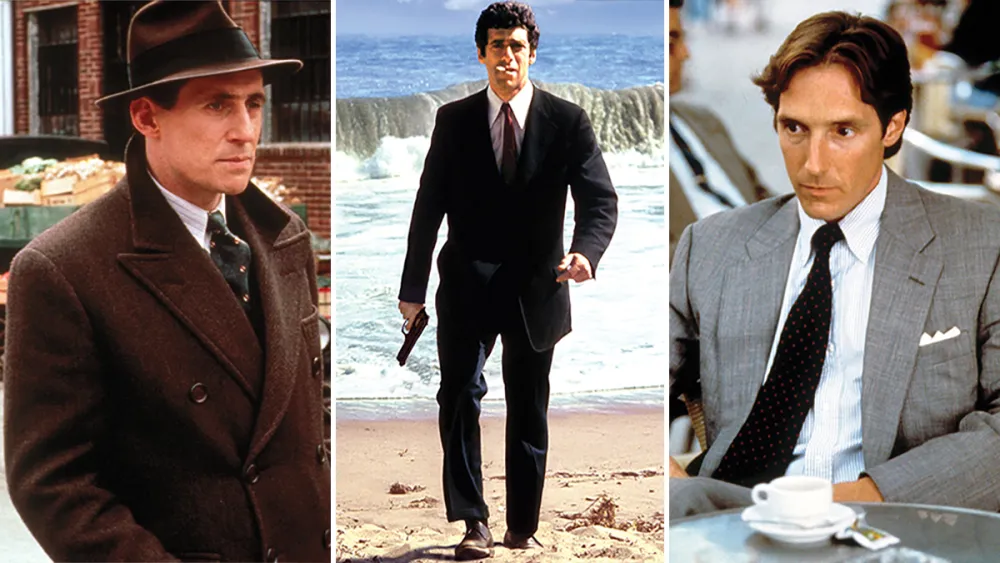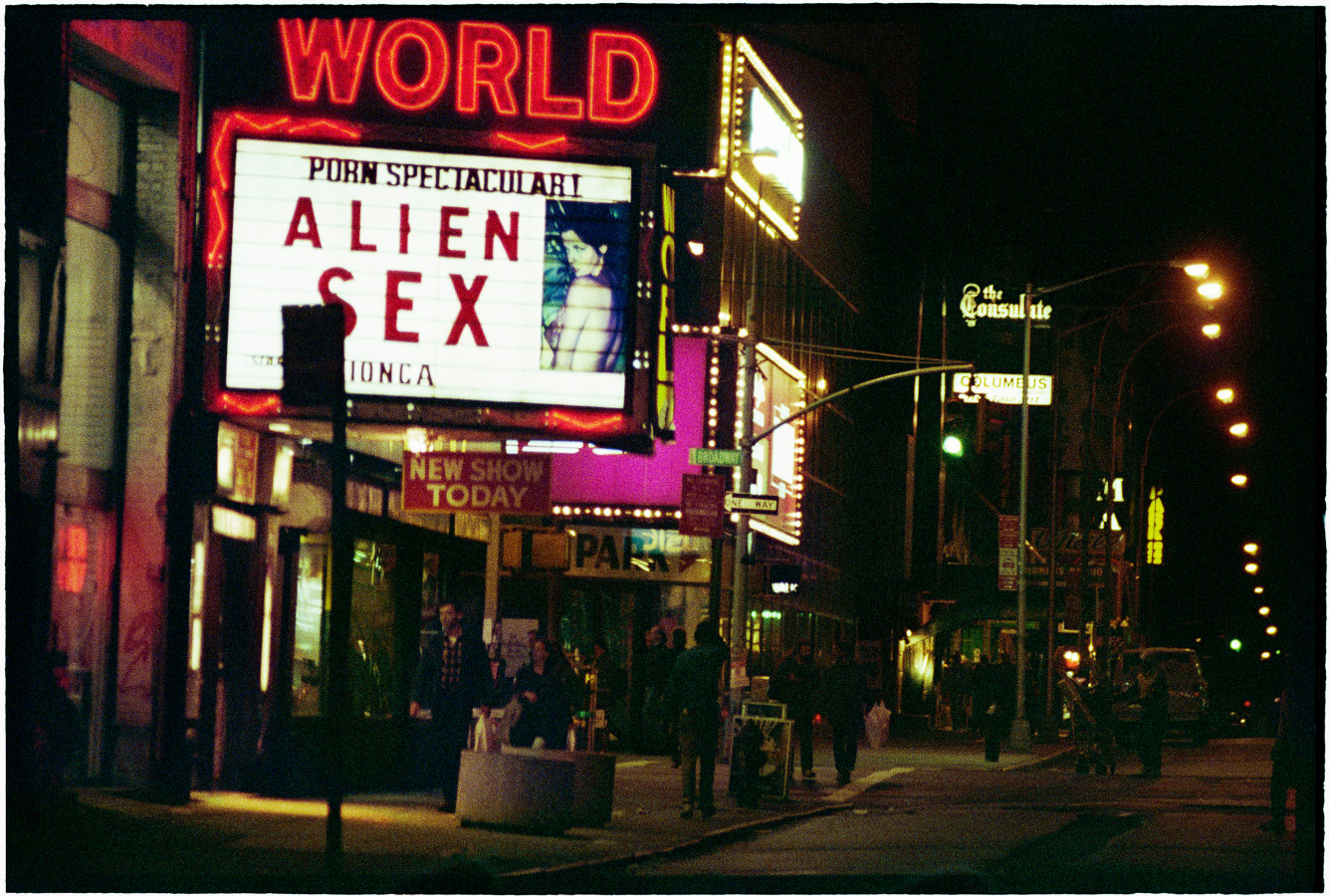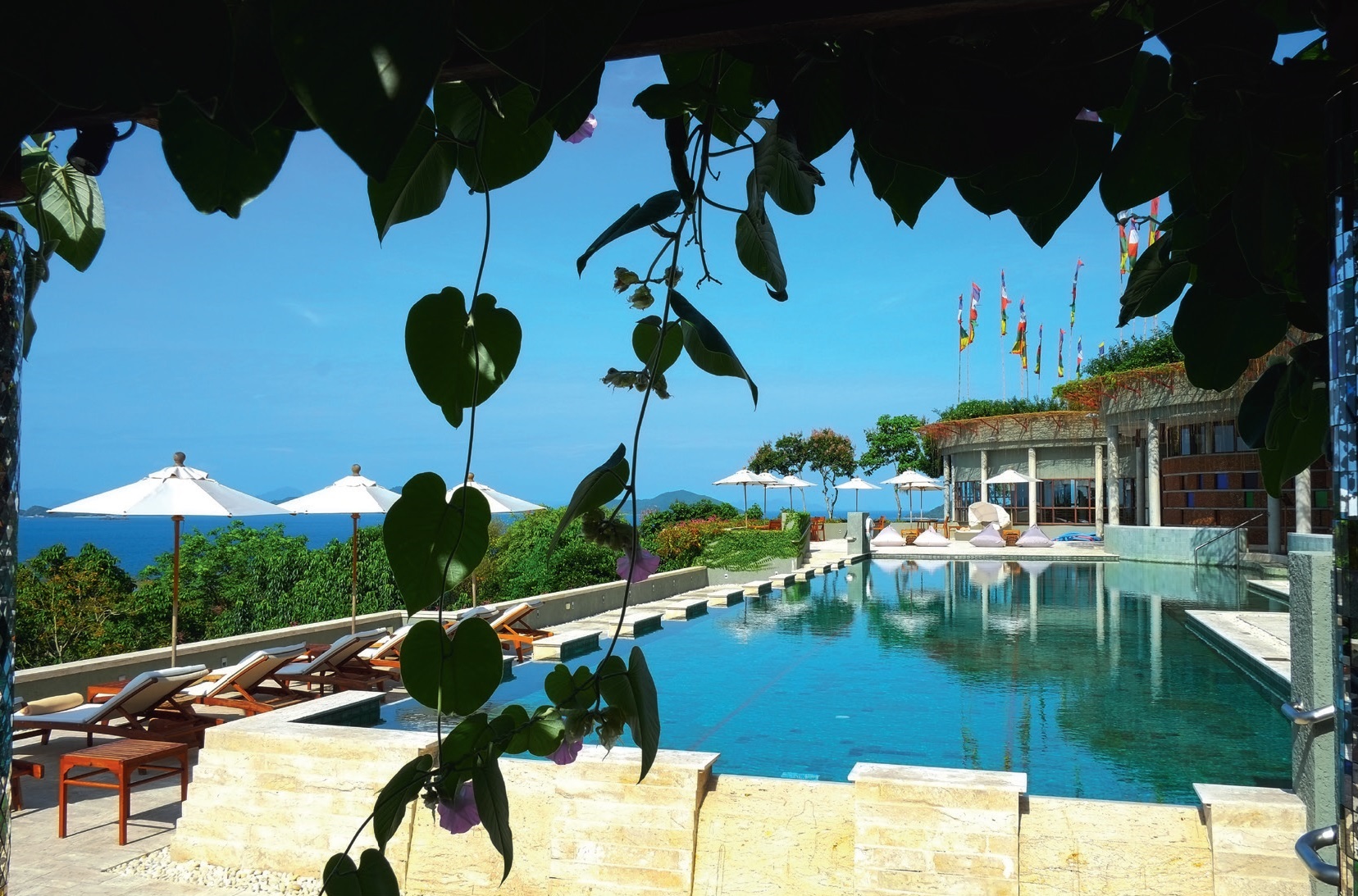
Thailand’s Kamalaya resort brings health and healing in beautiful Koh Samui
At Thailand’s Kamalaya retreat, regaining peak wellness goes much further than skin deep
Related articles
The man sitting at the next table is reading a book titled *Designing Your Life: How to Build
a Life that Works for You.* Such flagrant reading of self-help literature at dinner might seem incongruous … but not at Kamalaya, on Thailand’s Koh Samui. After all, many people end up at the retreat because their life has become unworkable in some way; food, booze, sugar, work,
digital connectivity. Others are facing more serious upsets in the fabric of their existence, such as divorce, the loss of a job, the death of a parent.
For all of them, Kamalaya is perhaps uniquely placed to help, bringing Buddhist traditions and philosophy together with holistic healing.

Kamalaya’s Karina and John Stewart
Co-founders John and Karina Stewart had envisioned just this marriage of their respective areas of expertise. Having served as a monk in the Vedic tradition for over 15 years, John met Karina at his ashram in India; she was visiting during her anthropology studies at Princeton University (she also has a Master’s degree in traditional Chinese medicine). A decade later, they were married and moved to Kathmandu, where John forged a successful career as a dealer in Asian art.
In the background, they nurtured a plan to create a wellness retreat that would go deeper than merely diet and exercise, to also rejuvenate the mind and the soul.

A beachfront villa with private pool
I certainly arrived at Kamalaya in need of replenishment. A frantic work schedule and the demands of three children had left me burnt-out and exhausted. My similarly worn-out husband, joining me for the retreat, had recently turned 50, so was in the midst of the inevitable reflection such a milestone brings. The Asian Bliss program, one of the retreat’s stress and burnout programs, seemed an obvious choice for me, while my husband chose Optimal Fitness.

Our wind-down began as soon as the humid warmth seeped into our bones. A swim in the landscaped pool near the beach was followed by lunch in the nearby Amrita Café, one of two restaurants at the 75-room retreat, accompanied by a selection from the dizzying array of juices, elixirs and herbal teas on offer (the Kamalaya Detox Juice, blending pineapple, coconut water and holy basil became a firm favourite).
A wellness consultation and my first treatment followed – a 90-minute traditional Thai massage with a herbal compress, in an open-air massage room with a view of the ocean. All around I could hear birds in the trees, even as an afternoon thunderstorm rolled in, bringing the soothing thrum of rain falling outside.
From all corners of Kamalaya, you can see the ocean and hear the sound of water running, glimpse Thai spirit houses, and marvel at the tropical gardens. The Asianinspired buildings, designed by Australian architect and artist Robert Powell, seem as though they are sinking into lush greenery, vivid flowers and even ancient granite boulders (around which they have been
carefully constructed). The environment is a key part of the experience.

Treatment rooms with ocean views
“Most people live in cities, and often we look at nature from a distance, but we don’t actually get in it. We have tried to create a Garden of Eden with this interface with nature, because nature is the first part of healing,” John says.
John was himself recuperating from illness on Koh Samui when he discovered the site for Kamalaya. He and a friend were making their way to a quiet beach, hacking through the jungle with machetes, when they stumbled upon a cave.
“I felt like I was spoken to; it called me into the cave,” John says. “It was obvious it was a holy place – there were leftovers of incense and dried flowers and mantras written on the cave walls. There were statues of Buddha.”
He called Karina to let her know that he had found the location for their retreat. As an ancient Buddhist holy site, the hillside overlooking the sea and neighbouring islands was a perfect place for their vision to come to life.

The cave, still preserved as a sacred place, is literally underneath the Wellness Sanctuary at Kamalaya – the ‘nerve centre’ where more than 100 of the retreat’s 350 staff work across a variety of modalities, from fitness to massage, naturopathy, traditional Chinese medicine and Ayurvedic medicine.
A hallmark of Kamalaya’s approach to wellness is choice. The Stewarts didn’t want to force their guests into a rigid, prescriptive regimen.
It’s an approach that has been very successful. Since Kamalaya was established 12 years ago, it has been highly awarded, recently being named Worldwide Health and Wellness Destination of the Year at the World Spa and Wellness Awards.
Perhaps most telling is the number of guests who return: around 40 per cent are repeat visitors, some many times over. Also unusually, over 30 per cent of Kamalaya’s visitors are men, often attracted by the efficacy of the retreat’s popular detox or stress and burnout programs.
“They have often been told by a doctor, or a friend, or a family member, that they need to make some changes. Sometimes it’s weight loss, sometimes it’s habits like drinking too much. Men know when they have gone a bit over the edge and need to reframe their habits,” Karina says.
Increasingly attracting guests are a new ‘embracing change’ program and small group retreats, designed specifically for those going through times of transition and looking to explore how they can transform emotional and psychological habits “to better use their mind as an ally, rather than an opponent”, Karina says. These programs offer the most contact with Kamalaya’s
Life Enhancement Mentors, specialists in the mind-body connection who have each spent at least 10 years in monastic life, typically in the Buddhist tradition.

Granite boulders are incorporated into the architecture, seen here in the Rocktop Villa
Even outside these programs, the effect of taking guests out of their hectic lives into a jungle oasis, removing the distractions of the digital world (devices are discouraged in common areas, and wi-fi is not freely available), and calming the nervous system through healthy food and juices and an abundance of treatments (two a day is typical of the Kamalaya programs), is
inevitably an instructive reflection on life.
“There is less and less time for the moments in which you think about your life. People get very successful, and then they also feel that something’s not quite right, and they don’t know what it is, so they start looking. Kamalaya is a safe entry point – you come for your health, you come for your exercise, but you also might find something more,” John says.
“Our lives are very full and very satisfying, but sometimes we realise that we have veered off course – the decisions were so small along the way, that all of a sudden you realise that you started in one place and ended up somewhere completely different,” Karina adds.
“I think it is simply a matter of overstimulation, so it is very difficult to maintain that inner compass. This is an opportunity through the physical, mental, emotional to recalibrate our life direction.”
One guest who made a significant major shift after a visit to Kamalaya was Philippe Joubert, who was then CEO of energy multinational Alstom, with responsibility for hundreds of thousands of employees. Already thinking about making a change, Joubert left his job to become an advocate for building sustainability into business strategy, and was one of the driving forces
behind the Paris climate summit. On one of his regular return visits recently, he gave a talk on how business should be the first line of defence in saving the planet.
“It was an extraordinary success several of the CEOs who were guests came to see him afterwards to ask which mentors he worked with, how did he come to that decision, and share that they also felt like they were at that place in their lives and wanted to make a change,” John says.
Certainly after a short time at Kamalaya, I found it easier to get some perspective. Days filled with yoga – in an open-air sala with stunning ocean views – meditation, qi gong (a holistic breathing and movement technique), time in the pool or steam caverns, workshops, fitness sessions and treatments of every kind (including a stimulating Royal Ayurvedic massage that left me pumping with energy) zapped stress.
Guests can choose to eat from either a detox or regular menu, but even the latter steers clear of dairy, sugar, salt, fat and additives, instead focusing on fresh, organic food, served as close to its natural state as possible. I dabbled in the detox menu, which is based on the principle of detoxifying and nourishing the body through food, rather than fasting, and included a delicious mung bean risotto (words I never thought I would write together), a dandelion-based detox coffee, and virtuous shots of wheatgrass and a ‘brain tonic’ (gotu kola, turmeric, ginger and coriander).
At the end of our five-day stay, I felt restored, lighter and more energetic – and nervous about re-entry into ‘normal life’. For my husband, sessions with a personal trainer and in the far infrared sauna had done their job, shaving four centimetres from around his body (even with a few beers during the week, which is still on offer to non-detox guests, as well as wine and coffee). Over the weeks after our return, realisations about things we wanted to change slowly came to the surface.
“When you are under stress, you can become addicted to the intensity of it, so you feed it. Once you take people out of their daily habits, and give them something to do so that they’re busy but it’s different, everything changes,” John says. “People automatically start to look at the world in a different way. When we built Kamalaya, we created it to be that sort of place – it’s just a different world that you walk into for a little while.”
Subscribe to the Newsletter
Recommended for you
The Ultimate Guide to Pairing Wine With Spicy Food
What to drink when your favorite cuisine brings the heat.
Here’s What Goes Into Making Jay-Z’s $1,800 Champagne
We put Armand de Brignac Blanc de Noirs Assemblage No. 4 under the microsope.
By Mike Desimone And Jeff Jenssen
April 23, 2024
You may also like.
You may also like.
8 Fascinating Facts You Didn’t Know About Aston Martin
The British sports car company is most famous as the vehicle of choice for James Bond, but Aston Martin has an interesting history beyond 007.
Aston Martin will forever be associated with James Bond, ever since everyone’s favourite spy took delivery of his signature silver DB5 in the 1964 film Goldfinger. But there’s a lot more to the history of this famed British sports car brand beyond its association with the fictional British Secret Service agent.
Let’s dive into the long and colourful history of Aston Martin.
You may also like.
What Venice’s New Tourist Tax Means for Your Next Trip
The Italian city will now charge visitors an entry fee during peak season.
Visiting the Floating City just got a bit more expensive.
Venice is officially the first metropolis in the world to start implementing a day-trip fee in an effort to help the Italian hot spot combat overtourism during peak season, The Associated Press reported. The new program, which went into effect, requires travellers to cough up roughly €5 (about $AUD8.50) per person before they can explore the city’s canals and historic sites. Back in January, Venice also announced that starting in June, it would cap the size of tourist groups to 25 people and prohibit loudspeakers in the city centre and the islands of Murano, Burano, and Torcello.
“We need to find a new balance between the tourists and residents,’ Simone Venturini, the city’s top tourism official, told AP News. “We need to safeguard the spaces of the residents, of course, and we need to discourage the arrival of day-trippers on some particular days.”
During this trial phase, the fee only applies to the 29 days deemed the busiest—between April 25 and July 14—and tickets will remain valid from 8:30 am to 4 pm. Visitors under 14 years of age will be allowed in free of charge in addition to guests with hotel reservations. However, the latter must apply online beforehand to request an exemption. Day-trippers can also pre-pay for tickets online via the city’s official tourism site or snap them up in person at the Santa Lucia train station.
“With courage and great humility, we are introducing this system because we want to give a future to Venice and leave this heritage of humanity to future generations,” Venice Mayor Luigi Brugnaro said in a statement on X (formerly known as Twitter) regarding the city’s much-talked-about entry fee.
Despite the mayor’s backing, it’s apparent that residents weren’t totally pleased with the program. The regulation led to protests and riots outside of the train station, The Independent reported. “We are against this measure because it will do nothing to stop overtourism,” resident Cristina Romieri told the outlet. “Moreover, it is such a complex regulation with so many exceptions that it will also be difficult to enforce it.”
While Venice is the first city to carry out the new day-tripper fee, several other European locales have introduced or raised tourist taxes to fend off large crowds and boost the local economy. Most recently, Barcelona increased its city-wide tourist tax. Similarly, you’ll have to pay an extra “climate crisis resilience” tax if you plan on visiting Greece that will fund the country’s disaster recovery projects.
You may also like.
Omega Reveals a New Speedmaster Ahead of the Paris 2024 Olympics
Your first look at the new Speedmaster Chronoscope, designed in the colour theme of the Paris Olympics.
The starters are on the blocks, and with less than 100 days to go until the Paris 2024 Olympics, luxury Swiss watchmaker Omega was bound to release something spectacular to mark its bragging rights as the official timekeeper for the Summer Games. Enter the new 43mm Speedmaster Chronoscope, available in new colourways—gold, black, and white—in line with the colour theme of the Olympic Games in Paris this July.
So, what do we get in this nicely-wrapped, Olympics-inspired package? Technically, there are four new podium-worthy iterations of the iconic Speedmaster.

The new versions present handsomely in stainless steel or 18K Moonshine Gold—the brand’s proprietary yellow gold known for its enduring shine. The steel version has an anodised aluminium bezel and a stainless steel bracelet or vintage-inspired perforated leather strap. The Moonshine Gold iteration boasts a ceramic bezel; it will most likely appease Speedy collectors, particularly those with an affinity for Omega’s long-standing role as stewards of the Olympic Games.
Notably, each watch bears an attractive white opaline dial; the background to three dark grey timing scales in a 1940s “snail” design. Of course, this Speedmaster Chronoscope is special in its own right. For the most part, the overall look of the Speedmaster has remained true to its 1957 origins. This Speedmaster, however, adopts Omega’s Chronoscope design from 2021, including the storied tachymeter scale, along with a telemeter, and pulsometer scale—essentially, three different measurements on the wrist.
While the technical nature of this timepiece won’t interest some, others will revel in its theatrics. Turn over each timepiece, and instead of a transparent crystal caseback, there is a stamped medallion featuring a mirror-polished Paris 2024 logo, along with “Paris 2024” and the Olympic Rings—a subtle nod to this year’s games.
Powering this Olympiad offering—and ensuring the greatest level of accuracy—is the Co-Axial Master Chronometer Calibre 9908 and 9909, certified by METAS.

A Speedmaster to commemorate the Olympic Games was as sure a bet as Mondo Deplantis winning gold in the men’s pole vault—especially after Omega revealed its Olympic-edition Seamaster Diver 300m “Paris 2024” last year—but they delivered a great addition to the legacy collection, without gimmickry.
However, the all-gold Speedmaster is 85K at the top end of the scale, which is a lot of money for a watch of this stature. By comparison, the immaculate Speedmaster Moonshine gold with a sun-brushed green PVD “step” dial is 15K cheaper, albeit without the Chronoscope complications.
—
The Omega Speedmaster Chronoscope in stainless steel with a leather strap is priced at $15,725; stainless steel with steel bracelet at $16,275; 18k Moonshine Gold on leather strap $54,325; and 18k Moonshine Gold with matching gold bracelet $85,350, available at Omega boutiques now.
Discover the collection here
You may also like.
Here’s What Goes Into Making Jay-Z’s $1,800 Champagne
We put Armand de Brignac Blanc de Noirs Assemblage No. 4 under the microsope.
In our quest to locate the most exclusive and exciting wines for our readers, we usually ask the question, “How many bottles of this were made?” Often, we get a general response based on an annual average, although many Champagne houses simply respond, “We do not wish to communicate our quantities.” As far as we’re concerned, that’s pretty much like pleading the Fifth on the witness stand; yes, you’re not incriminating yourself, but anyone paying attention knows you’re probably guilty of something. In the case of some Champagne houses, that something is making a whole lot of bottles—millions of them—while creating an illusion of rarity.
We received the exact opposite reply regarding Armand de Brignac Blanc de Noirs Assemblage No. 4. Yasmin Allen, the company’s president and CEO, told us only 7,328 bottles would be released of this Pinot Noir offering. It’s good to know that with a sticker price of around $1,800, it’s highly limited, but it still makes one wonder what’s so exceptional about it.
Known by its nickname, Ace of Spades, for its distinctive and decorative metallic packaging, Armand de Brignac is owned by Louis Vuitton Moët Hennessy and Jay-Z and is produced by Champagne Cattier. Each bottle of Assemblage No. 4 is numbered; a small plate on the back reads “Assemblage Four, [X,XXX]/7,328, Disgorged: 20 April, 2023.” Prior to disgorgement, it spent seven years in the bottle on lees after primary fermentation mostly in stainless steel with a small amount in concrete. That’s the longest of the house’s Champagnes spent on the lees, but Allen says the winemaking team tasted along the way and would have disgorged earlier than planned if they’d felt the time was right.
Chef de cave, Alexandre Cattier, says the wine is sourced from some of the best Premier and Grand Cru Pinot Noir–producing villages in the Champagne region, including Chigny-les-Roses, Verzenay, Rilly-la-Montagne, Verzy, Ludes, Mailly-Champagne, and Ville-sur-Arce in the Aube département. This is considered a multi-vintage expression, using wine from a consecutive trio of vintages—2013, 2014, and 2015—to create an “intense and rich” blend. Seventy percent of the offering is from 2015 (hailed as one of the finest vintages in recent memory), with 15 percent each from the other two years.

This precisely crafted Champagne uses only the tête de cuvée juice, a highly selective extraction process. As Allen points out, “the winemakers solely take the first and freshest portion of the gentle cuvée grape press,” which assures that the finished wine will be the highest quality. Armand de Brignac used grapes from various sites and three different vintages so the final product would reflect the house signature style. This is the fourth release in a series that began with Assemblage No. 1. “Testing different levels of intensity of aromas with the balance of red and dark fruits has been a guiding principle between the Blanc de Noirs that followed,” Allen explains.
The CEO recommends allowing the Assemblage No. 4 to linger in your glass for a while, telling us, “Your palette will go on a journey, evolving from one incredible aroma to the next as the wine warms in your glass where it will open up to an extraordinary length.” We found it to have a gorgeous bouquet of raspberry and Mission fig with hints of river rock; as it opened, notes of toasted almond and just-baked brioche became noticeable. With striking acidity and a vein of minerality, it has luscious nectarine, passion fruit, candied orange peel, and red plum flavors with touches of beeswax and a whiff of baking spices on the enduring finish. We enjoyed our bottle with a roast chicken rubbed with butter and herbes de Provence and savored the final, extremely rare sip with a bit of Stilton. Unfortunately, the pairing possibilities are not infinite with this release; there are only 7,327 more ways to enjoy yours.
You may also like.
Bill Henson Show Opens at Roslyn Oxley9 Gallery
Dark, grainy and full of shadows Bill Henson’s latest show draws on 35 mm colour film shot in New York City in 1989.
Bill Henson is one of Australia’s best-known contemporary photographers. When a show by this calibre of artist opens here, the art world waits with bated breath to see what he will unveil.
This time, he presents a historically important landscape series that chronicles a time in New York City that no longer exists. It’s a nostalgic trip back in time, a nocturnal odyssey through the frenetic, neon-lit streets of a long-lost America.
Known for his chiaroscuro style, Henson’s cinematic photographs often transform his subject into ambiguous objects of beauty. This time round, the show presents a mysterious walk through the streets of Manhattan, evoking a seedy, yet beautiful vision of the city.
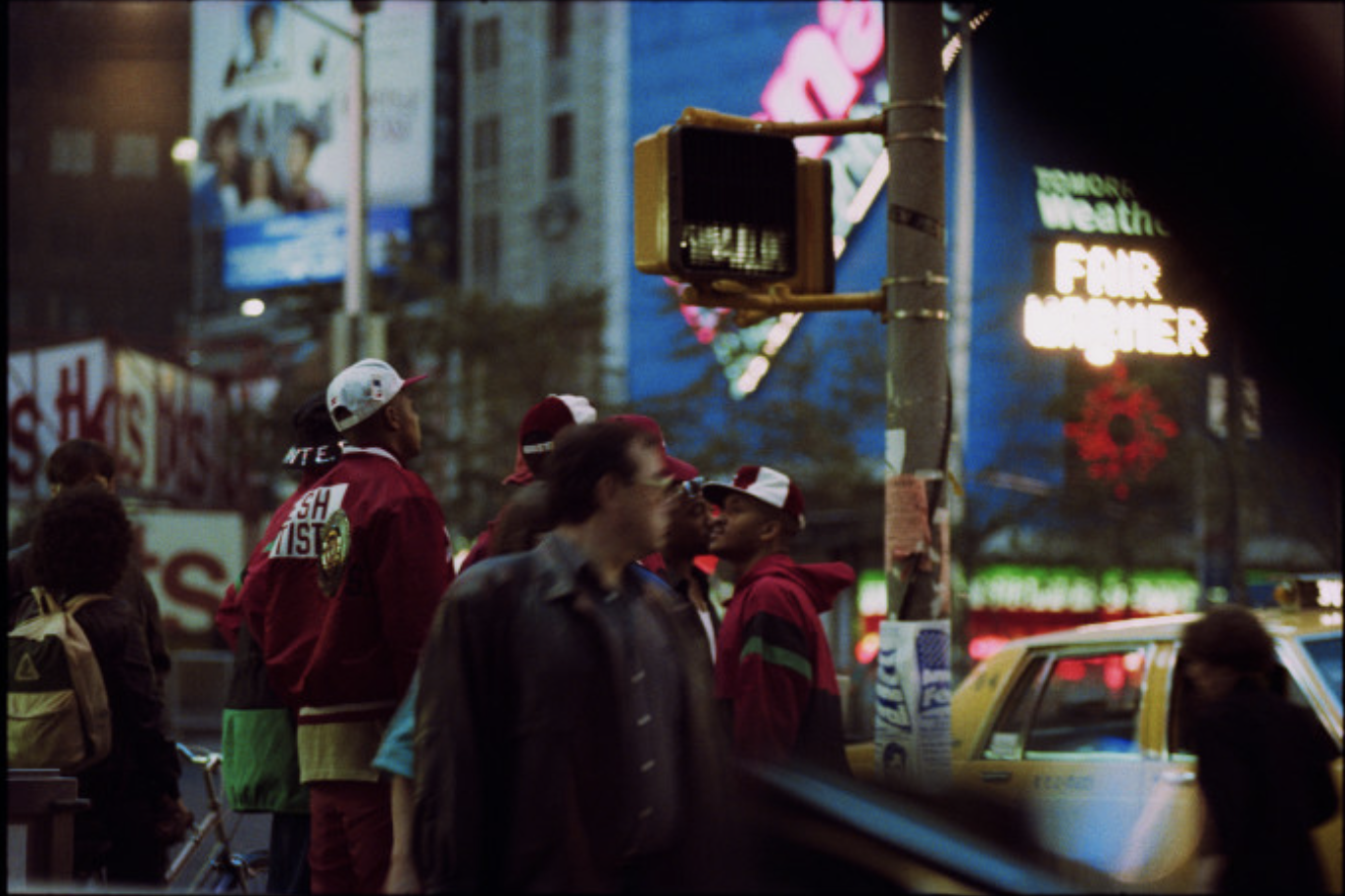
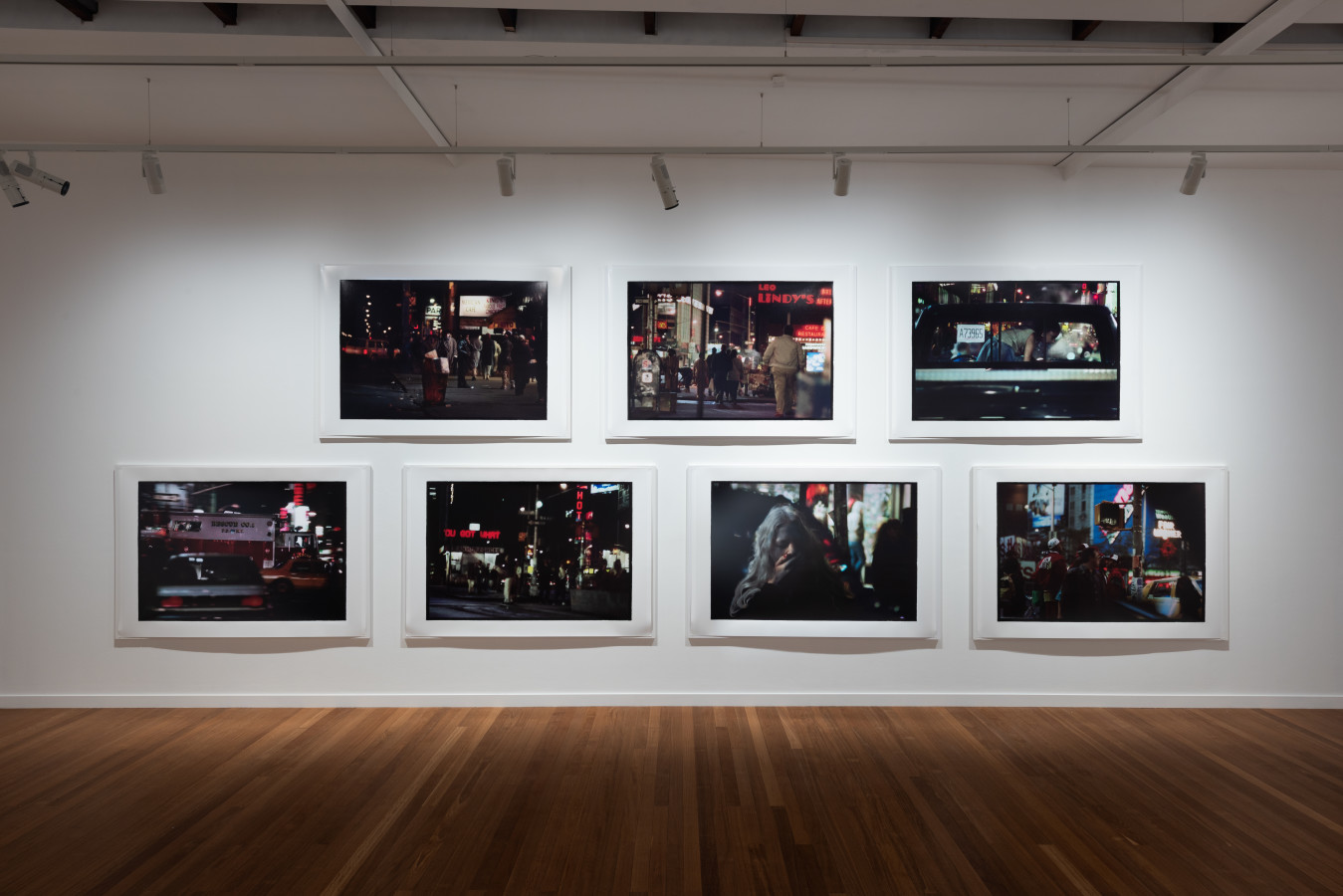
Relying on generative gaps, these landscapes result from Henson mining his archive of negatives and manipulating them to produce a finished print. Sometimes, they are composed by a principle of magnification, with Henson honing in on details, and sometimes, they are created through areas of black being expanded to make the scene more cinematic and foreboding. Like silence in a film or the pause in a pulse, the black suggests the things you can’t see.
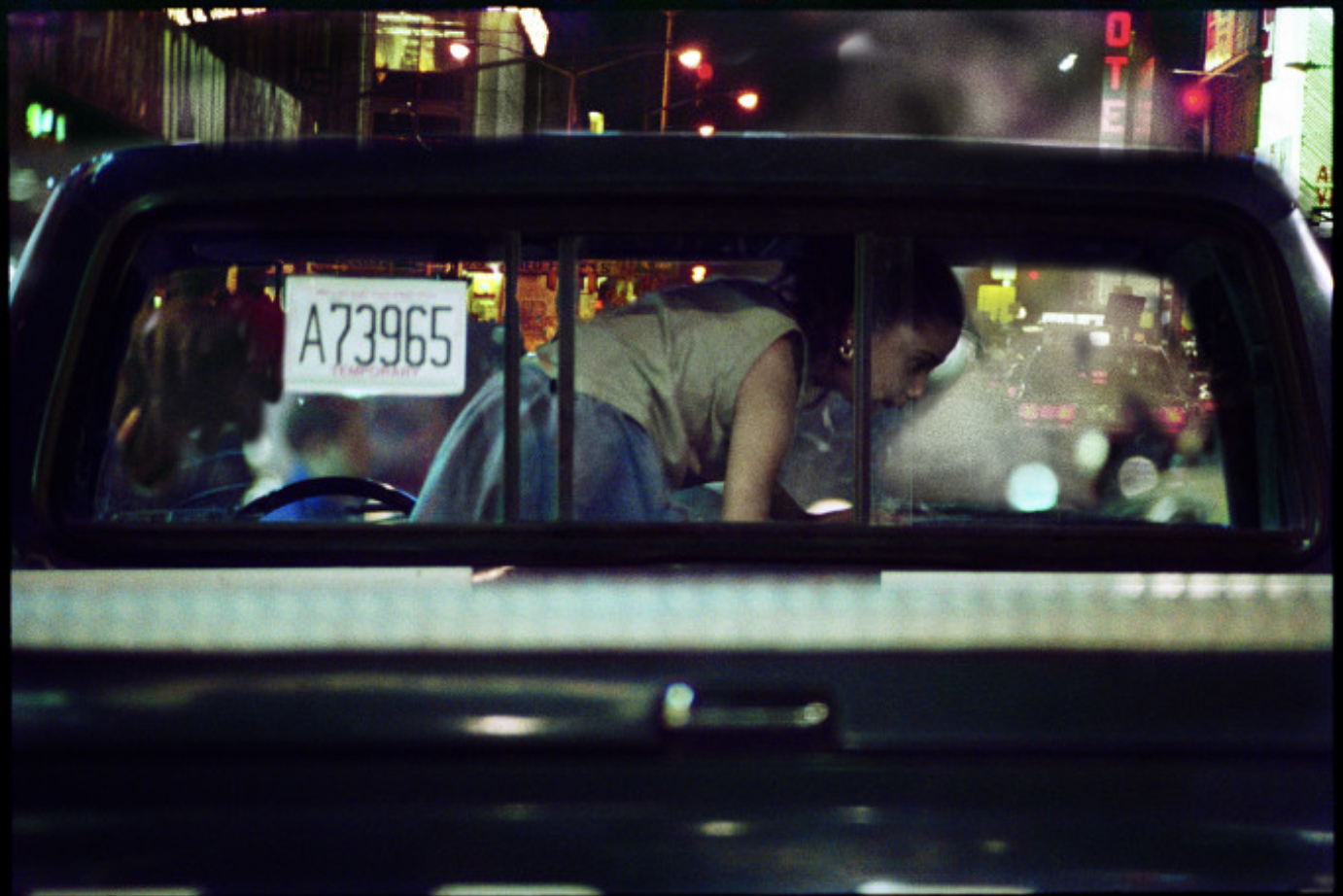

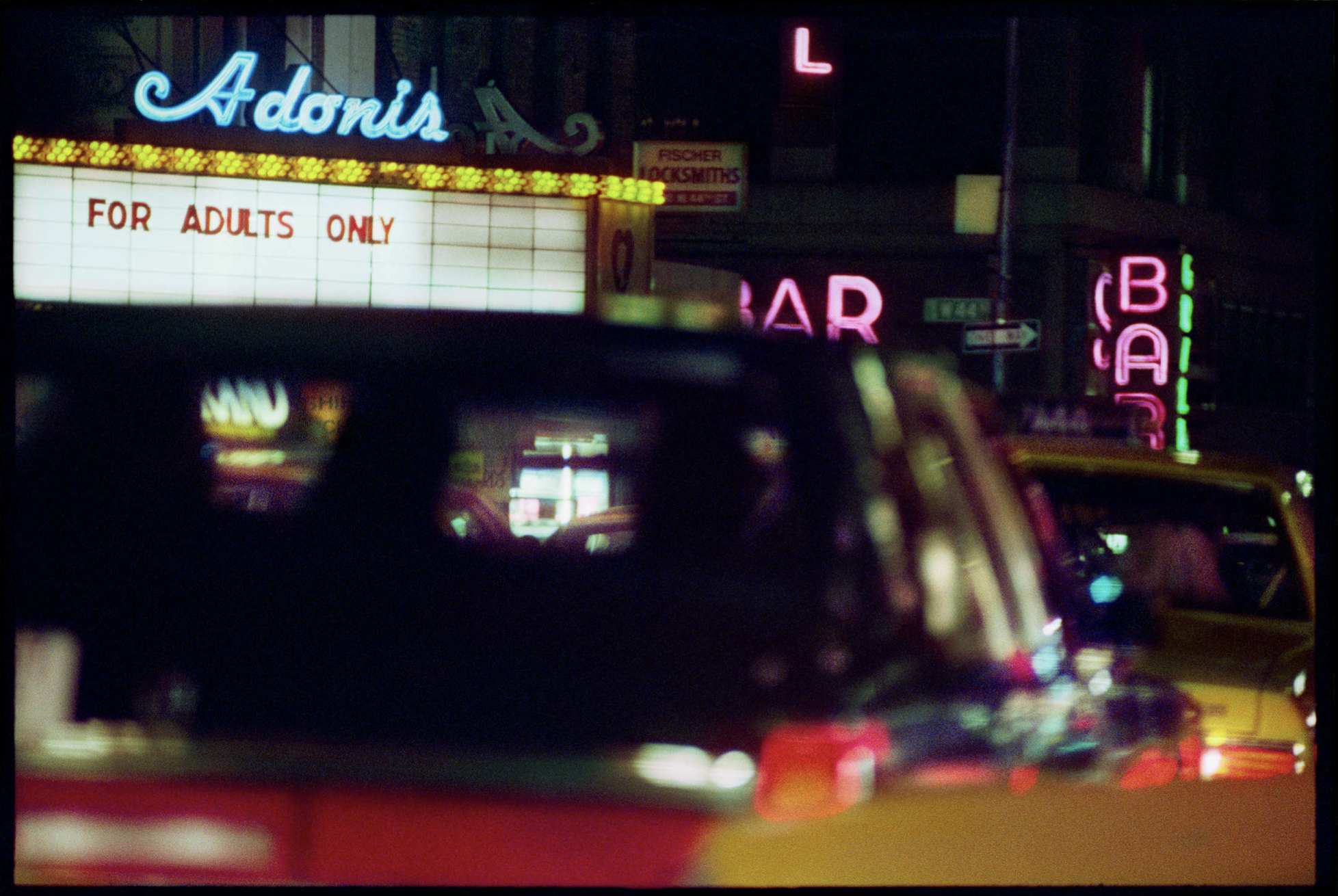
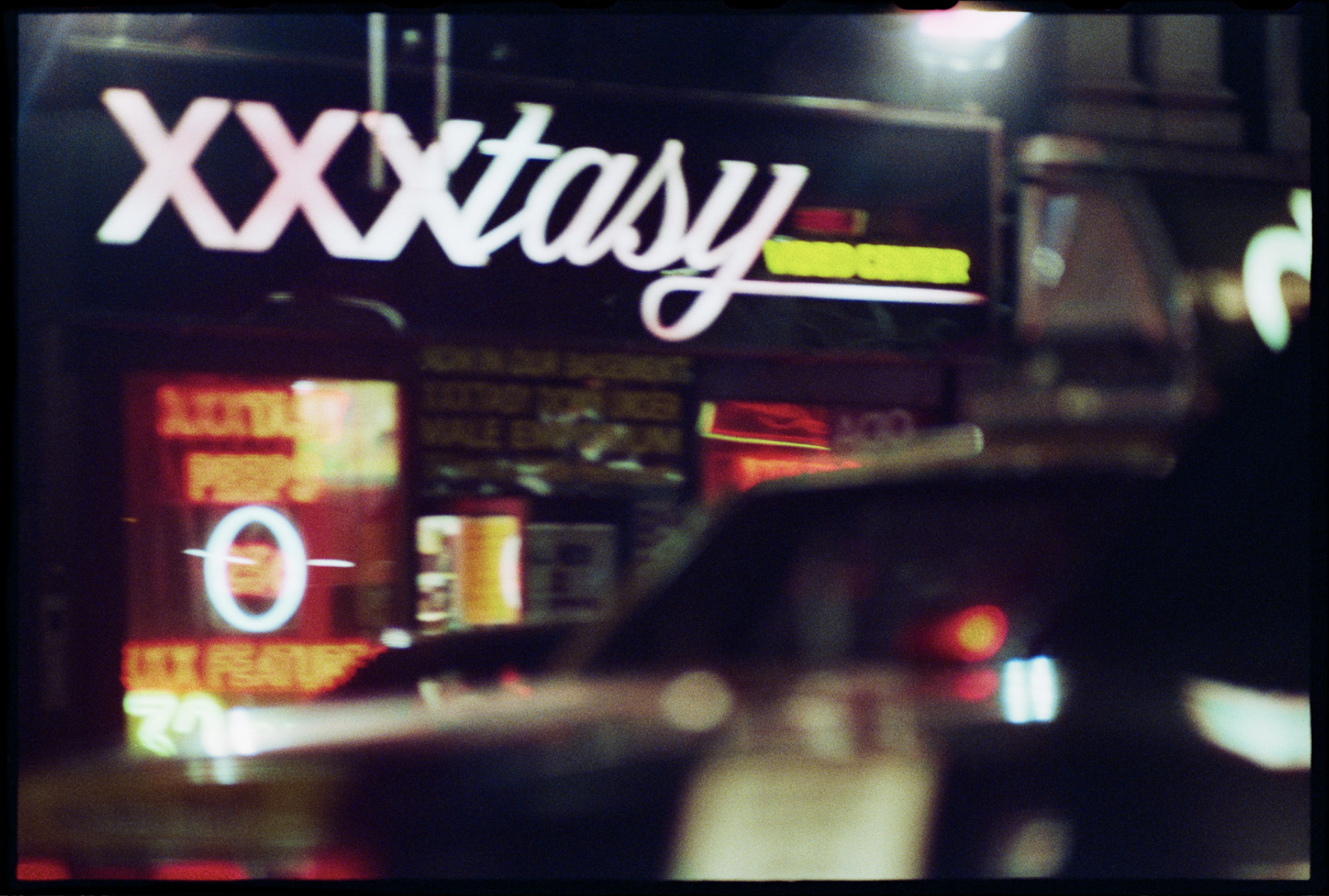
Henson’s illustrious career has spanned four decades and was memorably marred by controversy over a series of nude adolescent photographs shown in 2008, which made him front-page news for weeks. This series of portraits made Henson the subject of a police investigation during which no offence was found.
In recent years, Henson has been a sharp critic of cancel culture, encouraging artists to contribute something that will have lasting value and add to the conversation, rather than tearing down the past.

His work deals with the liminal space between the mystical and the real, the seen and unseen, the boundary between youth and adulthood.
His famous Paris Opera Project, 1990-91, pictured above, is similarly intense as the current show, dwelling on the border between the painterly and the cinematic.
Bill Henson’s ‘The Liquid Night’ runs until 11 May 2024 at Roslyn Oxley9 Gallery.
Roslyn Oxley9 Gallery, 8 Soudan Ln, Paddington NSW; roslynoxley9.com.au









